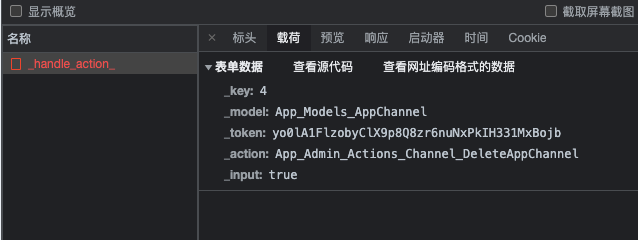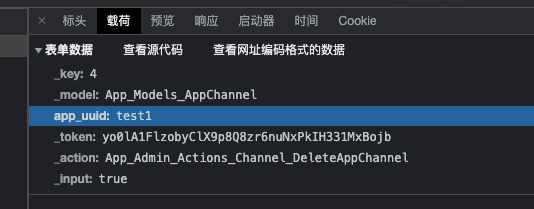Laravel-admin Special Routing Operations
Background
Recently, while refactoring a project, I implemented table partitioning for the previous database tables. The design structure is as follows:
apps // Application table
app_channel_appuuid // Channel table (the table name is app_channel_ concatenated with the corresponding appuuid)
app_versions_appuuid // Version table (the table name is app_version_ concatenated with the corresponding appuuid)As shown above, the entire routing no longer uses resource routes. The routes are as follows:
// Channel management
$router->get('/channel/{app_id?}', 'ChannelController@index')->name('channel');
$router->get('/channel/{app_id}/create', 'ChannelController@create')->name('channel.create');
$router->post('/channel/{app_id}', 'ChannelController@store')->name('channel.store');
$router->get('/channel/{app_id}/{id}/edit', 'ChannelController@edit')->name('channel.edit');
$router->put('/channel/{app_id}/{id}', 'ChannelController@update')->name('channel.update');Modification (Edit/Add Operation Path)
Since the backend framework uses laravel-admin, the add and edit button paths are as shown below:

It was found that the specified app_id was not included. After searching the official documentation without finding a solution, I checked the source code and found a method in Grid.php:
/**
* Set resource path for grid.
*
* @param string $path
*
* @return $this
*/
public function setResource($path)
{
$this->resourcePath = $path;
return $this;
}Then, add the following line in the grid method of the controller:
$grid->setResource(route('admin.channel') . '/' . $app_info->id);The path will then be correct:

Modification (Delete Operation)
The delete operation provided by laravel-admin is not suitable here, so it was disabled first:
$actions->disableDelete();Then, a custom delete operation was created:
php artisan admin:action Channel\DeleteAppChannel --grid-row --name="Delete"namespace App\Admin\Actions\Channel;
use Encore\Admin\Actions\RowAction;
use Illuminate\Database\Eloquent\Model;
class DeleteAppChannel extends RowAction
{
public $name = 'Delete';
public function handle(Model $model)
{
// $model ...
return $this->response()->success('Success message.')->refresh();
}
}$grid->actions(function ($actions) {
$actions->add(new DeleteAppChannel);
});Here, a problem was encountered: since the model's table is dynamically concatenated, directly operating like this would result in the table not being found. So, the following change was made: add an app_Info property to the DeleteAppChannel class and a method:
public function setAppId($app_info): static
{
$this->app_info = $app_info;
return $this;
}Then modify the grid as follows:
$obj = new DeleteAppChannel();
$actions->add($obj->setAppId($app_info));Specifying the table name in the model within handle did not work well. After checking the source code, it was found that the system's delete operation uses pajax to pass the specified model and key for the operation, as shown below:

Through reflection, the _model and _key parameters are used to query and delete the corresponding data. The final solution was to see if app_uuid could also be passed during this process, so that the corresponding table name could be specified during the query. Without modifying the framework code, the following method was found:
/**
* @return array
*/
public function parameters()
{
return ['_model' => $this->getModelClass()];
}This method is in GridAction. RowAction inherits from GridAction, and the custom action inherits from RowAction.
So, override parameters in the custom DeleteAppChannel method:
public function parameters(): array
{
$arr = parent::parameters();
if ($this->app_info) {
$arr['app_uuid'] = $this->app_info->uuid;
}
return $arr;
}This passes the corresponding app's app_uuid:

Finally, override the retrieveModel method in RowAction to specify the model's table:
/**
* @param Request $request
*
* @return mixed
*/
public function retrieveModel(Request $request): mixed
{
if (!$key = $request->get('_key')) {
return false;
}
$modelClass = str_replace('_', '\\', $request->get('_model'));
if ($this->modelUseSoftDeletes($modelClass)) {
return $modelClass::withTrashed()->findOrFail($key);
}
if ($app_uuid = $request->get('app_uuid')) {
$obj = new $modelClass;
$obj->setTable('app_channel_' . $app_uuid);
return $obj->findOrFail($key);
}
return $modelClass::findOrFail($key);
}
